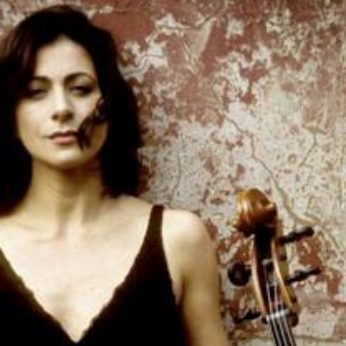Composer: Thomas Larcher (b. 1963)
Performance date: 01/07/2012
Venue: Bantry Library
Composition Year: 2007
Duration: 00:13:40
Recording Engineer: Anton Timoney, RTÉ lyric fm
Instrumentation: vn, pf
Instrumentation Category:Solo
Artists:
Natalie Clein -
[cello]

I do not compose my pieces for a certain voice range or orchestration, but for
musicians, for people. It is almost impossible for me to produce a piece
without having a particular person in mind or to hear him/her inwardly.
No matter how
standardised the interpretation of classical music is, and no matter how many
coordinates have been fixed and defined, I do not want to have them seen as
determining and limiting signs, but rather as guideposts towards the creation
of vital, organic music. In differentiated music, two participants are
necessary in order for a piece to evolve – the composer and the musician.
Just as there is no
one way for a composer to express himself or to notate music, neither is there
one way for a musician to read the notation or to interpret it. For this reason
we find ourselves in a network of meanings, gestures and signs which have to be
fathomed and expanded together. The tone, the breath, the gestures, the
dedication and the potential of a musician were ultimately decisive for the
form of the piece. It is music which pushes the expressive and technical
possibilities of the instrument to its very limits. It is music in which the
musician has to transport the contexts and expression over and above the
notation.
It was not
necessary for me to find a new form for this piece; it is a work which can and
should be performed in a normal concert situation. I deliberately wanted to
integrate the perhaps new and unusual content into a familiar form. And I also
wanted to embed the aforementioned extreme situations (where the technical
extremes are synonyms for tension, isolation, loss or tenderness) in an organic
process so the listener can empathise with and comprehend what is expressed in
the piece.
I would like to
thank Natalie Clein, to whom the Sonata is dedicated, for inspiring this piece
and for the path that led to the realisation of the music.
Copyright © 2024 West Cork Music. All rights reserved.
Designed and developed by Matrix Internet